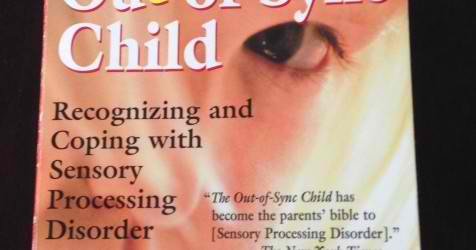Sensory Processing Disorders in Children
By Lauren Koepke, MT-BCOften times, children are trying to tell adults something through their behavior. It is my firm view that behavior is a form of communication and that what is perceived as “bad” behavior is really a sensory need not being met. A child who has been diagnosed with Autism Spectrum Disorder (ASD), Sensory Processing Disorder (SPD), or some other overlapping disorders, can have difficulty expressing exactly those needs.To be clear, SPD and ASD and not mutually exclusive. A child does not have to be diagnosed with ASD to have SPD and vise versa; SPD can overlap with several disorders (ADHD and learning disabilities included). At this point you might be wondering what exactly is SPD. SPD in a nutshell is, “the inability to use information received through the senses in order to function smoothly in daily life” (Kranowitz, 2005). That being said, there  are 5 senses in the body: tactile, vestibular, proprioceptive, visual, and auditory. The book, The Out-of-Sync Child by Carol Stock Kranowitz is an excellent resource for learning about SPD and has a more in-depth explanation in easy to understand language. Below, are short explanations of the senses. I know when I was first learning about SPD and incorporating sensory integration into my clinical skills it was a little overwhelming but worth the time and effort to help kids have a more balanced “sensory” experience in music therapy sessions.
are 5 senses in the body: tactile, vestibular, proprioceptive, visual, and auditory. The book, The Out-of-Sync Child by Carol Stock Kranowitz is an excellent resource for learning about SPD and has a more in-depth explanation in easy to understand language. Below, are short explanations of the senses. I know when I was first learning about SPD and incorporating sensory integration into my clinical skills it was a little overwhelming but worth the time and effort to help kids have a more balanced “sensory” experience in music therapy sessions.
Tactile:
The tactile sense involves the body’s sense of touch. This sense helps a person understand the world around them. For example, how hard to appropriately hug someone can be difficult if the tactile sense is lacking.
Vestibular:
This sense tells the brain where the body is at in space. It allows a person to know if he is right side up or upside-down. The vestibular sense utilizes the tiny hair cells in the ear to tell the person the body’s positioning. The ear plays a key role in this sense. However, don’t confuse it with the auditory sense because they aren’t the same.
Proprioceptive:
This can be easily confused with the vestibular sense. I know I, at least, had difficulty differentiating the 2 when I first learned about them. This sense tells the body about its movement. It indicates whether a person is running, standing, stretching, jumping, etc. It also tells the body how much effort the muscles need to exert to perform these actions and the timing of the actions (Kranowitz, 2005). Kinesthesia or “muscle sense” are also used to describe proprioception.
Visual:
The visual sense is pretty self-explanatory. It’s the ability to see the world and interpret what a person sees.
Auditory:
Kranowitz writes that the auditory and visual senses are closely linked to each other. The auditory sense is the ability to pick up sound waves and interpret them.In music therapy sessions, I closely watch each individual for signs that he or she needs sensory stimulation or may be getting too much stimulation. An example of “bad” behavior in need of sensory stimulation could be when a child hits with his or her hands. Depending on the child, a drum might be introduced so the child has the proprioceptive need met and also I can address an appropriate way to meet the need. If a drum isn’t handy at home, introduce clapping or high fives. There are many ways in music therapy that I incorporate sensory integration. If you have questions about how your child’s needs are being met in sessions or for suggestions at home, please feel free to ask.Kranowitz, C.S. (2005). The out-of-sync child: recognizing and coping with sensory Processing disorder (Rev. and updated ed.). New York: A Skylight Press Book/ A Perigee Book.

